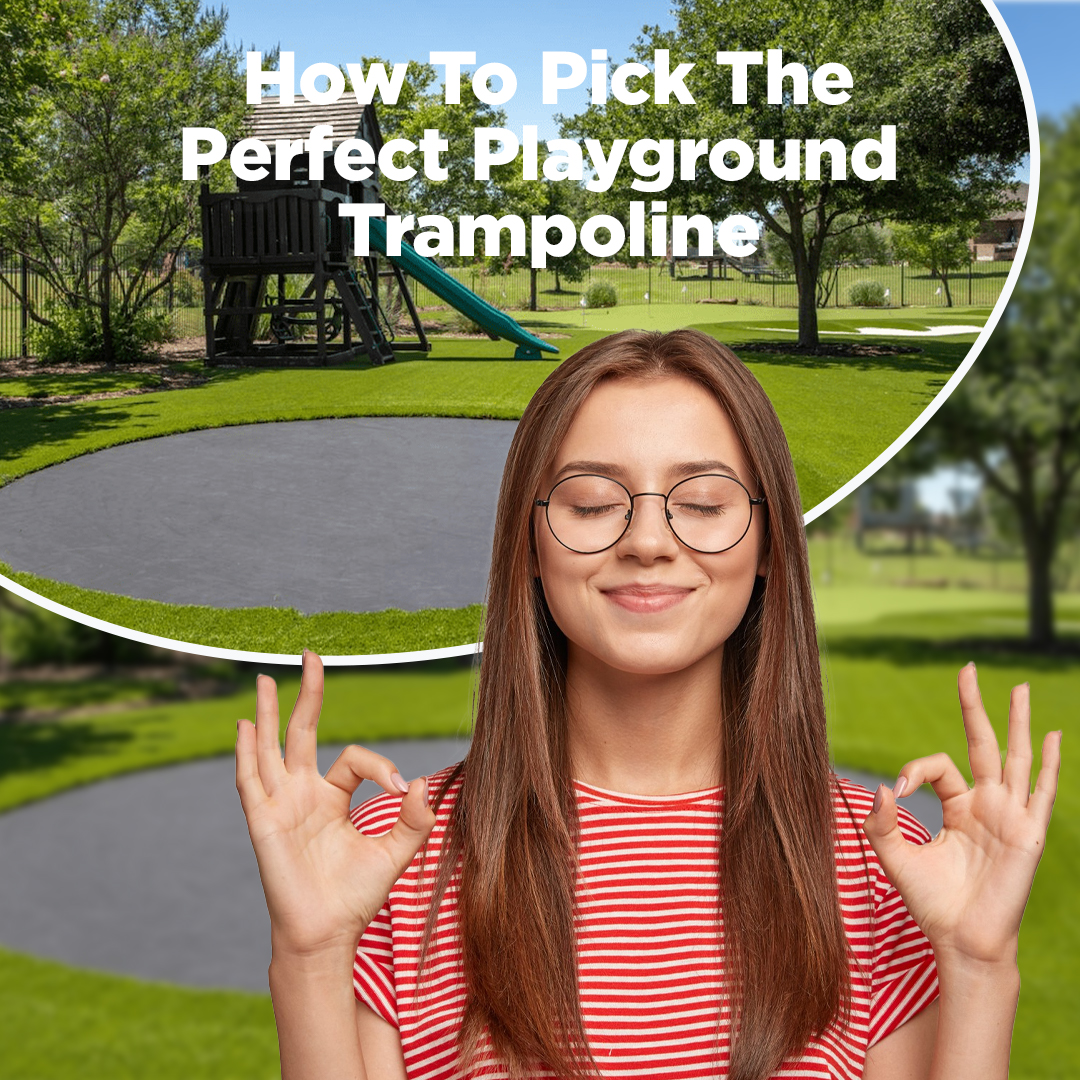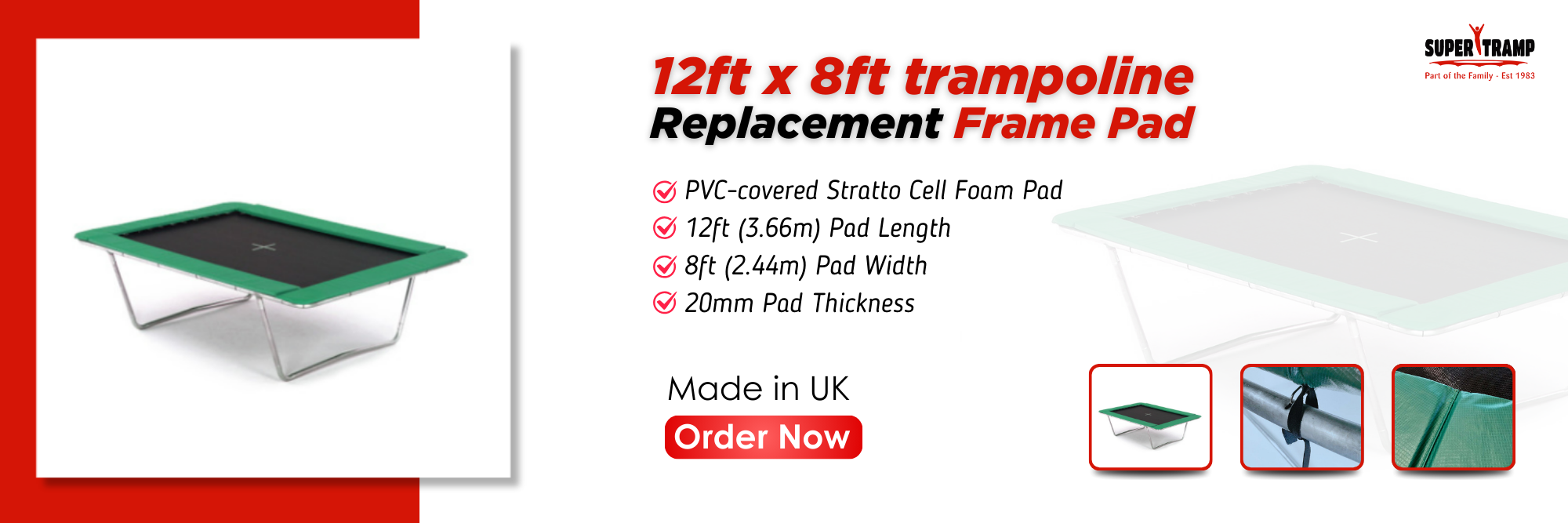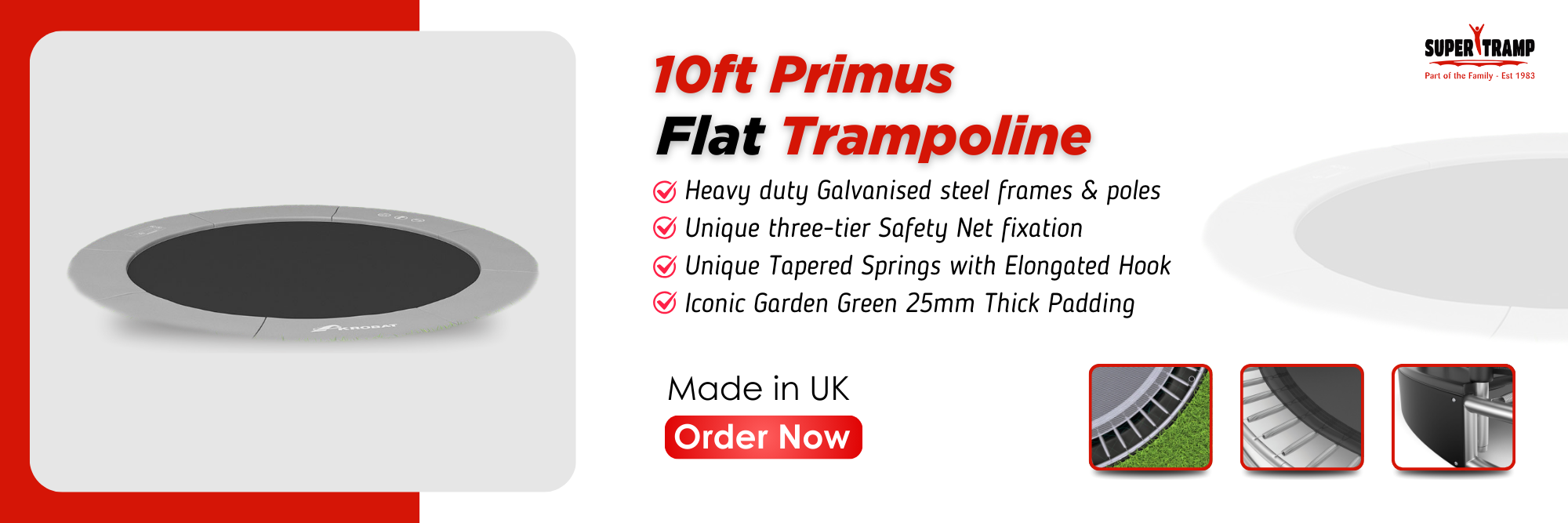A playground trampoline is a great way to have some fun at home and get the children outside. Selecting the perfect trampoline for your garden involves blending enjoyment with safety.
Table of Contents
ToggleFrom figuring out the right size for your garden to understanding important safety features, we’ll cover it all. Whether your garden is big or small, we’ll help you find the perfect trampoline to bring joy and laughter to your outdoor space.
In this article, we’ll walk you through everything you need to know to find the ideal playground trampoline for your garden and budget.
Consider Your Garden Space
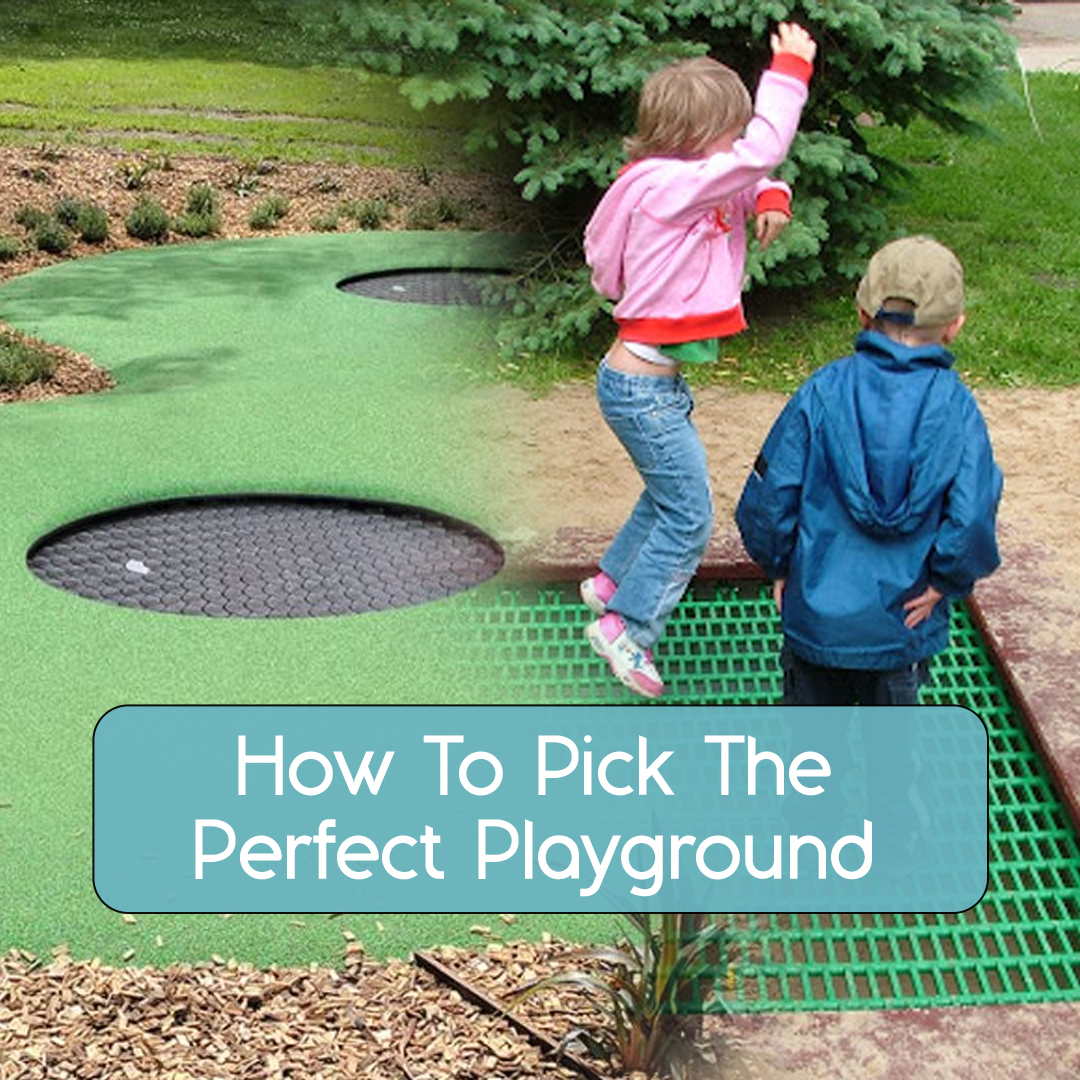
The size and shape of your unique garden will determine what size trampoline you can accommodate. Measure the area you have available and think about the layout you want.
You’ll need enough space for the trampoline padding and netting, as well as clearance around and above the trampoline for safe use. As a general rule, you’ll want at least 2 meters of clear space around the trampoline and 6 meters of height above it. Round trampolines typically require a bit more space than rectangular ones.
Consider the locations of fences, plants, garden furniture and play equipment. You’ll want the trampoline in a spot that gets lots of sun and on level ground, avoiding overhanging branches. Place it in an area that is easily viewed from inside your home for supervision.
Think about how the trampoline will impact your garden aesthetically. If you have a small, neatly landscaped space, a large trampoline may seem out of place. In this case, consider a smaller size or look for trampolines with padding and netting that blend in with your garden colours.
Once you’ve measured and thought through the layout, you’ll have a good idea of what size trampoline will work best. As a guide:
- For small gardens (15-25 square meters), opt for a 10ft trampoline. This provides enough bouncing space for 1-2 children but won’t overwhelm the area.
- For medium gardens (25-50 square meters), a 12ft trampoline is a good size. This suits family use and provides lots of bouncing space while still fitting comfortably in most gardens.
- For large gardens (over 50 square meters), you have room for a full-size 14ft trampoline or larger. A trampoline of this size can accommodate the whole family and active children. But measure your space carefully to ensure you have plenty of clearance around it.
The key is finding the “sweet spot” – a trampoline that’s large enough to thrill the children but sized right for your particular garden space. With some measuring and planning, you’ll find a perfect fit.
Trampoline Types
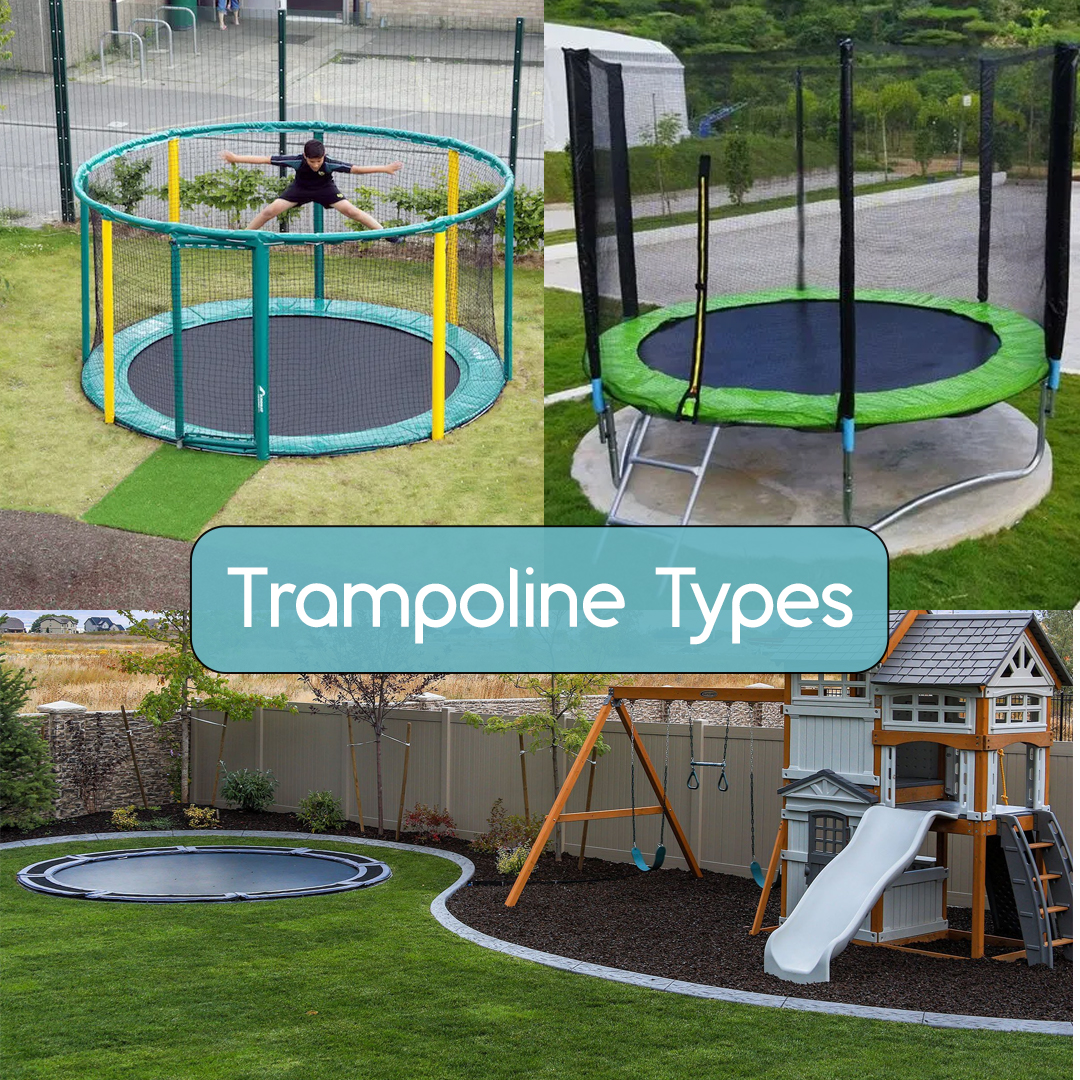
Trampoline comes in so many types, choosing one can be tricky. Let’s make it easy by looking at the main kinds you’ll find in the UK.
Round Trampolines
The classic round trampoline is a popular choice for homes. It provides the highest, most even bounce of any shape. Round trampolines also typically take up the least space in your garden. However, the circular shape means jumpers are confined to the center, limiting the variety of jumps or games possible. The springs are also usually exposed, posing a risk of injury.
Rectangular Trampolines
Rectangular trampolines provide a large jumping surface, which many find ideal for recreational or competitive use. The open space and sturdy frame allow for a wide range of jumping techniques, somersaults and aerial tricks. However, rectangular trampolines require a bigger area in your garden and more investment. They can also have an uneven, jarring bounce compared to round trampolines.
Oval Trampolines
An oval trampoline offers a good compromise between round and rectangular. It has a smoother bounce than rectangular types, using more springs for better distribution. The oval shape also provides more jumping area than a round trampoline. However, oval trampolines are often the most expensive type and still require a sizable space in your garden.
In the end, the trampoline that’s right for you depends on how much space you have, your budget, and how you intend to use it. A round trampoline may suit casual bouncing with children, while a rectangular trampoline is better for gymnastics. Think about your needs and do some comparison shopping to find a trampoline that fits just perfectly in your garden.
Weight Capacity
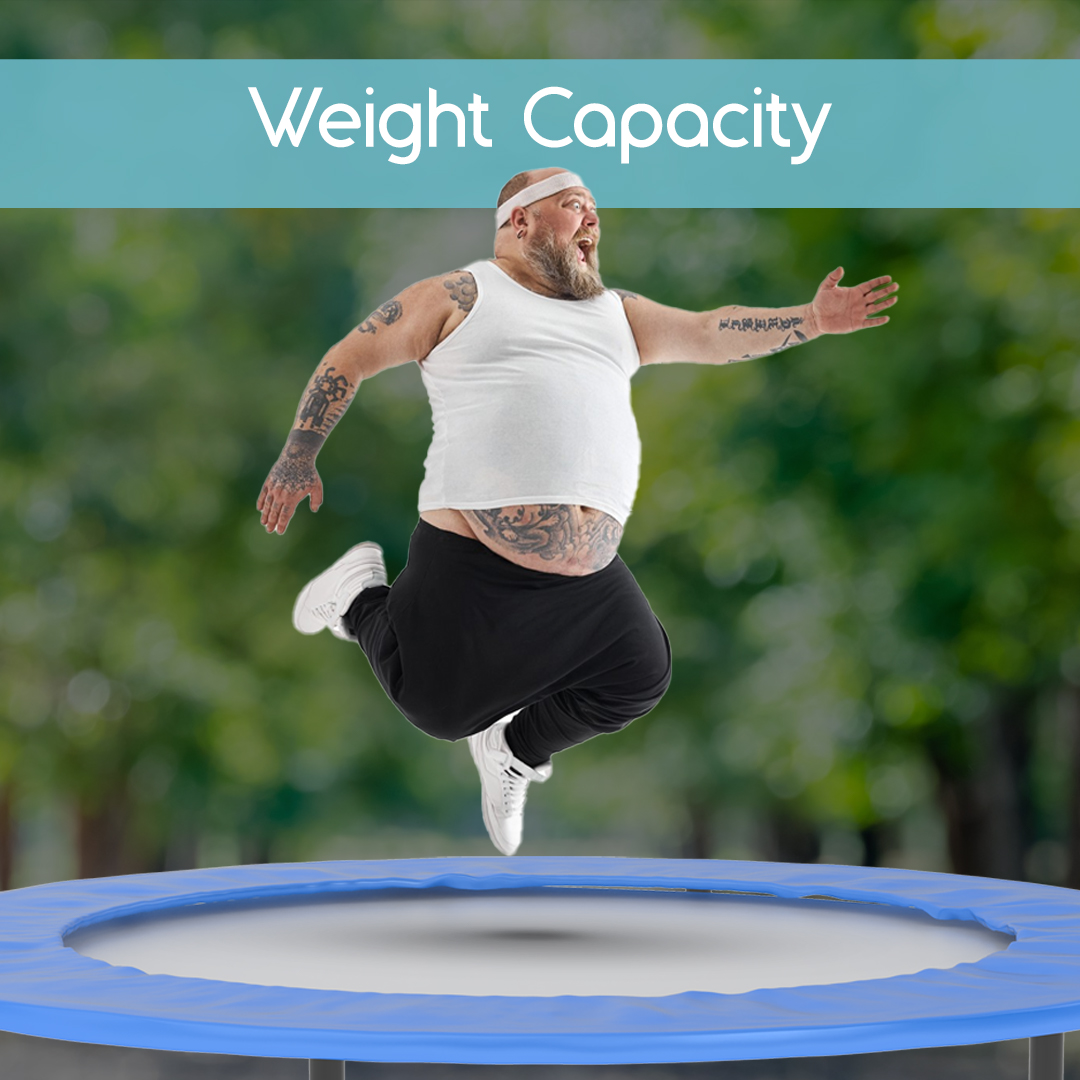
The maximum weight a trampoline can hold, known as its weight capacity, is one of the most important factors to consider when buying a trampoline. You’ll want to make sure the model you choose can support the combined weight of all the people who will be jumping on it at once. For the average family, a trampoline with a weight capacity of at least 200 to 300 pounds is a good place to start.
For younger children, a lower capacity of 100 to 200 pounds may be sufficient, but keep in mind that children’s weights will increase over time. It’s a good idea to overestimate rather than underestimate the capacity you’ll need. The last thing you want is for the mat to bottom out, or for springs to break due to excessive weight. This could lead to injuries for the people on the trampoline.
Higher-capacity trampolines, from 300 pounds up to 500 pounds or more, are better suited for teens and adults. These provide plenty of support for when friends come over to jump together. Some extra-large trampolines can hold 800 pounds or more, which is ideal if you plan to have big groups using it.
In summary, check the specifications for the maximum weight recommendation and use the following guidelines:
- 100-200 lbs.: Good for younger children.
- 200-300 lbs.: Suitable for most families.
- 300 lbs. and up: Ideal for teens, adults, and larger groups.
Make sure the trampoline you choose has a weight rating suitable for everyone who will use it. The weight capacity could be the difference between years of safe, fun jumping or a potential accident waiting to happen.
Safety Features
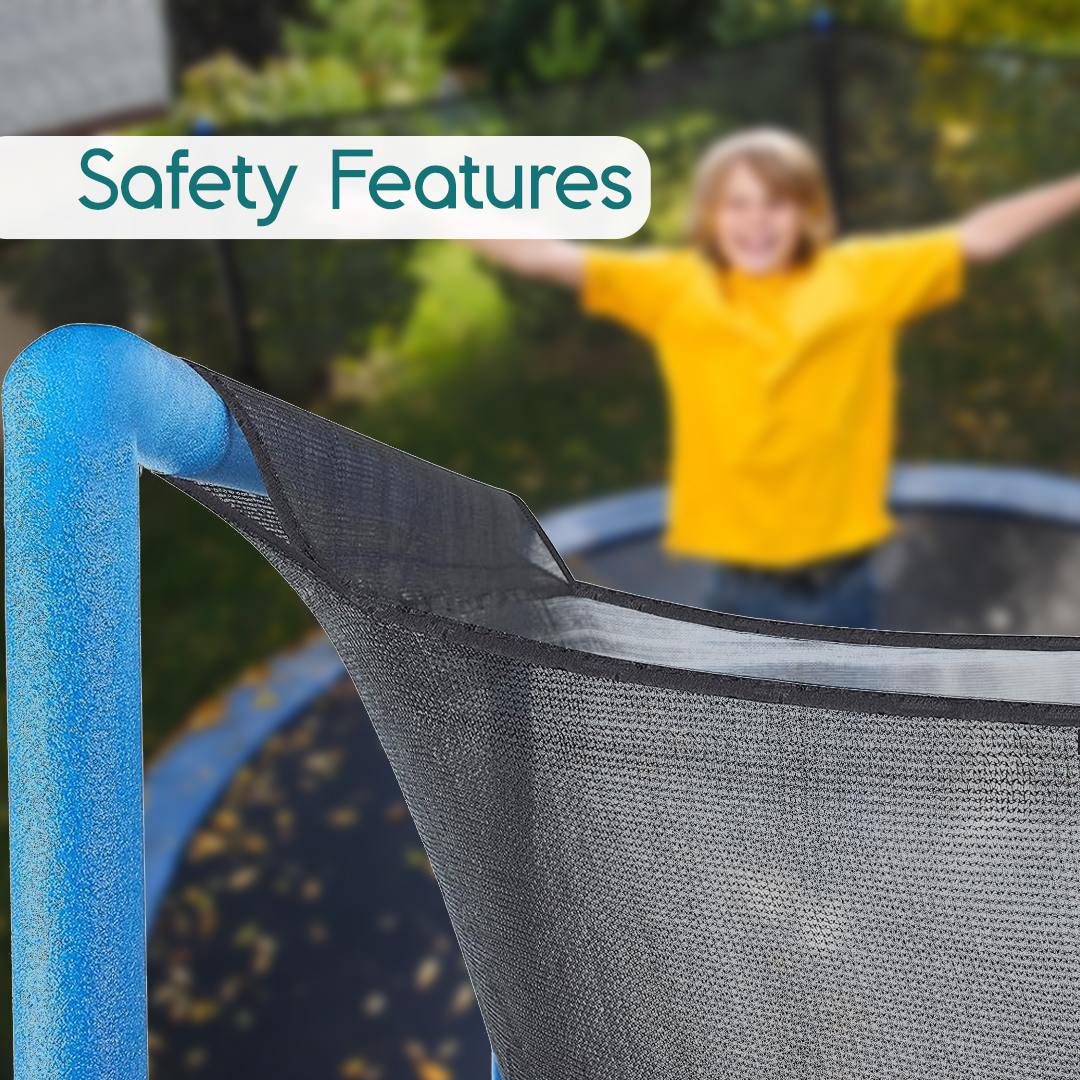
When shopping for a playground trampoline, safety should be your top priority. Several features can help reduce the risk of injury for children and peace of mind for parents.
Enclosure netting
Enclosure nets surround the entire trampoline and prevent jumpers from falling off, especially little ones who are still learning to balance. Look for nets that attach directly to the trampoline frame for maximum coverage and stability. The netting should be made of a sturdy material with small mesh to avoid fingers and toes getting caught.
Padded springs
The springs that connect the trampoline mat to the frame are essential for providing bounce, but they also pose a risk for pinching fingers and toes. Padded spring covers, also called spring pads, help prevent this and should encase each individual spring. The thicker and more durable the padding, the better.
Sturdy steel frame
The trampoline frame provides the foundation and structural support for the entire unit. A heavy-duty galvanised steel frame is best, since it won’t bend, break or rust easily. Look for a frame with welded joints, rather than bolted, for added stability. The more poles and crossbars in the frame, the safer and more durable it will be.
Safety pads
Thick safety pads that cover the springs and frame help prevent injuries from collisions and hard landings. Pads should be made of waterproof material and securely attached to the trampoline, especially on the edges and corners. They will provide an extra level of protection, especially for younger children.
By choosing a trampoline with robust safety features like enclosure netting, padded springs, a sturdy steel frame and thick safety pads, you’ll feel good about letting your children bounce to their heart’s content. Their safety and your peace of mind are well worth the investment.
Conclusion
Picking the right trampoline for your garden is always crucial. First, look at your garden size and think about where you want the trampoline. Always measure your space and choose a size that fits well to your space.
There are different types, like round, rectangular, and oval. Round ones are good for simple bouncing, rectangles for tricks, and ovals are a bit of both. Think about your needs and budget.
Check the trampoline’s weight limit. For younger children, 100-200 lbs. is fine, 200-300 lbs. suits most families, and 300 lbs. and up is good for teens and adults. Always choose a trampoline with nets, padded springs, and a strong frame. Also, look for durability with materials like galvanised steel.
Ultimately, by making informed choices regarding size, type, weight capacity, safety features, and durability, you’ll find the perfect playground trampoline that brings joy to your family while enhancing your garden space.
FAQ's
How do I determine the right size of trampoline for my garden?
Measure the available space in your garden, considering clearances for padding and netting. For small gardens, opt for a 6 to 10 feet trampoline, 12 to 14 feet for medium gardens, and 15 feet or larger for large gardens.
What are the main types of trampolines available in the UK?
The main types include round, rectangular, and oval trampolines. Round trampolines are great for simple bouncing, rectangular ones are suitable for tricks, and oval trampolines offer a balance of both.
How crucial is the weight capacity of a trampoline?
The weight capacity is vital for safety. For younger children, a capacity of 100-200 lbs is suitable, 200-300 lbs for most families, and 300 lbs and above for teens and adults. It’s advisable to overestimate to ensure safety during use.
What safety features should I look for in a trampoline?
Essential safety features include enclosure nets, padded springs, a sturdy steel frame, and safety pads. These features contribute to a safer bouncing experience, preventing falls and injuries.
Why is durability important in selecting a trampoline?
Durability ensures the trampoline lasts for years. Look for a rust-resistant galvanised steel frame, heavy-gauge springs, a permatron jumping mat, thick safety padding, and rust-resistant parts. This investment in quality materials will save you money in the long run.
DON'T MISS...
- 5 Strong Reasons to Add a Commercial Trampoline in Schools and Universities
- Strong Reason to Choose a Bespoke Trampoline Over a Standard One
- Everything You Need to Know About Trampoline Pads
- Discover 7 Surprising Ways to Transform Your Old Trampoline to New
- How to choose the Right Trampoline Springs for your Trampoline

